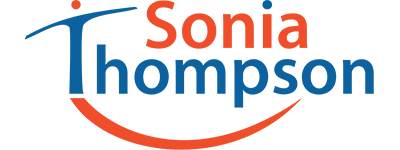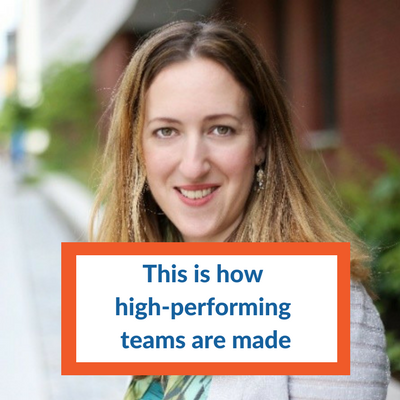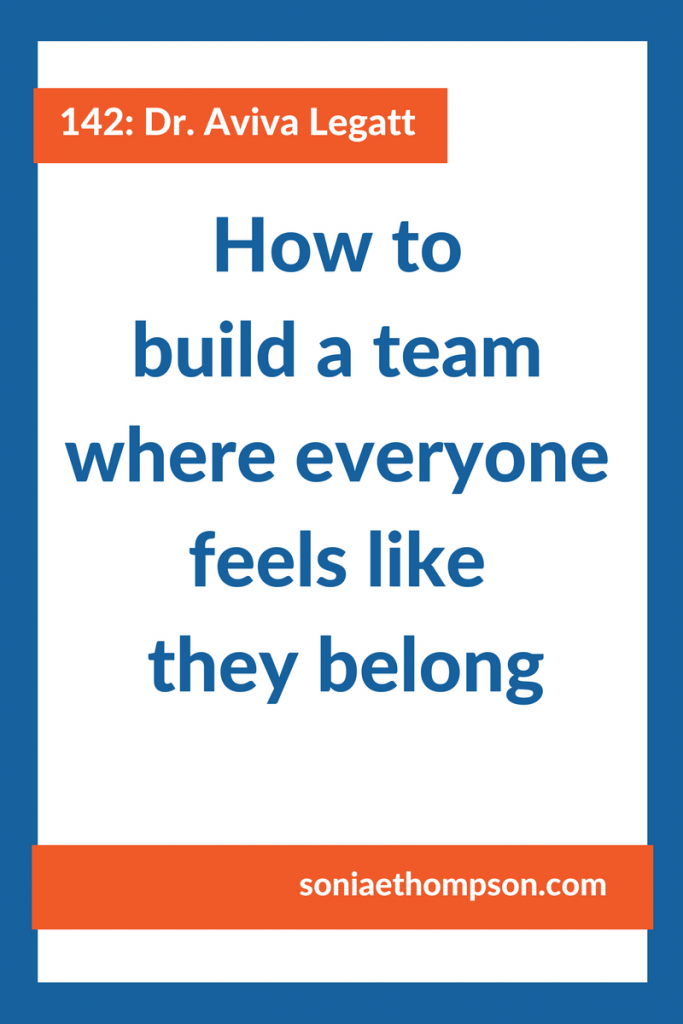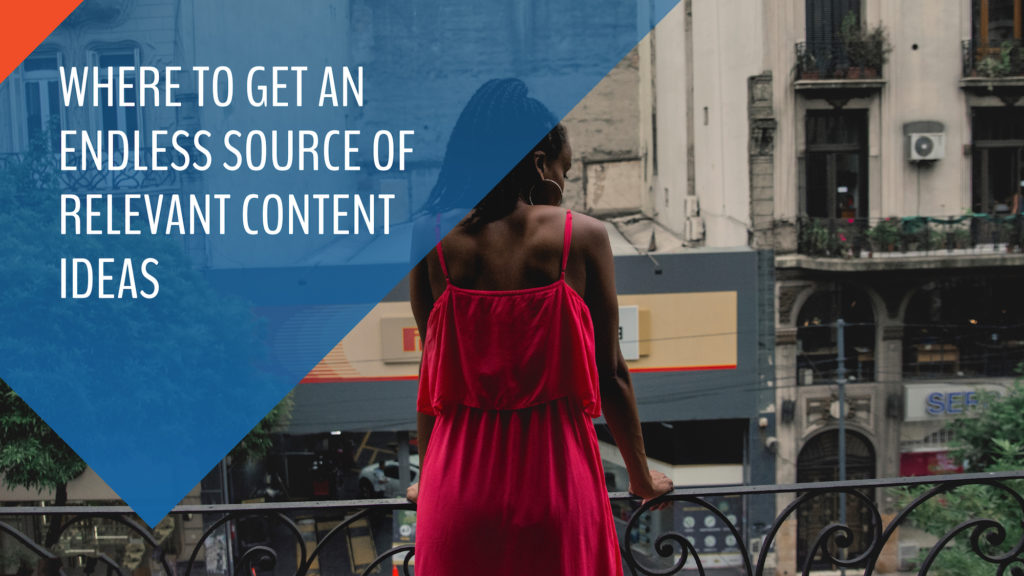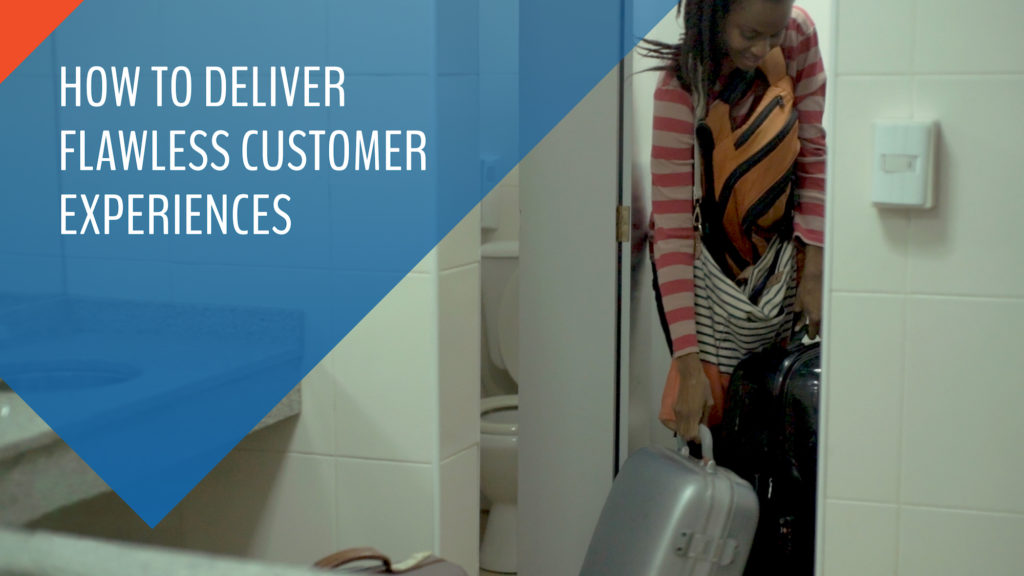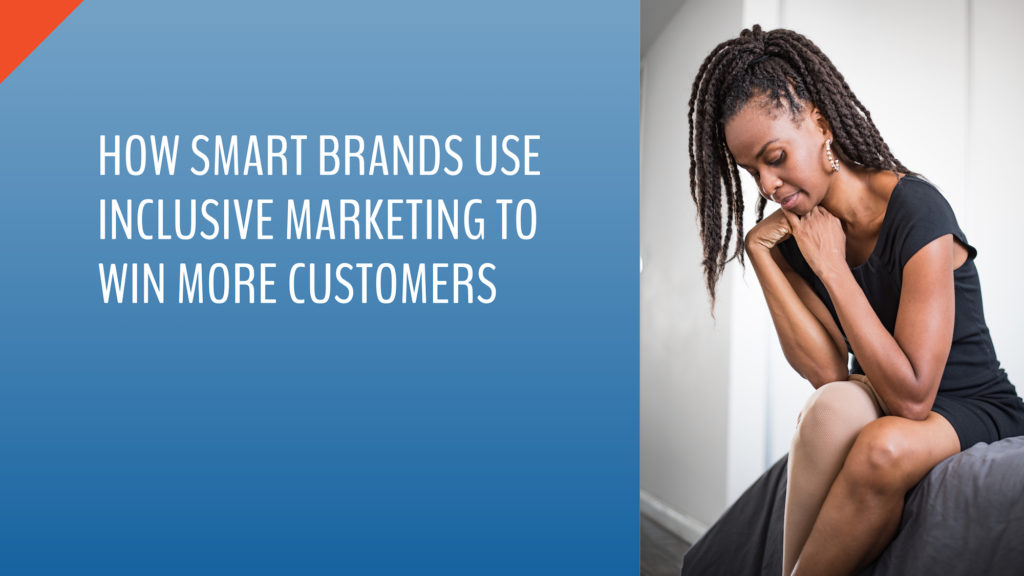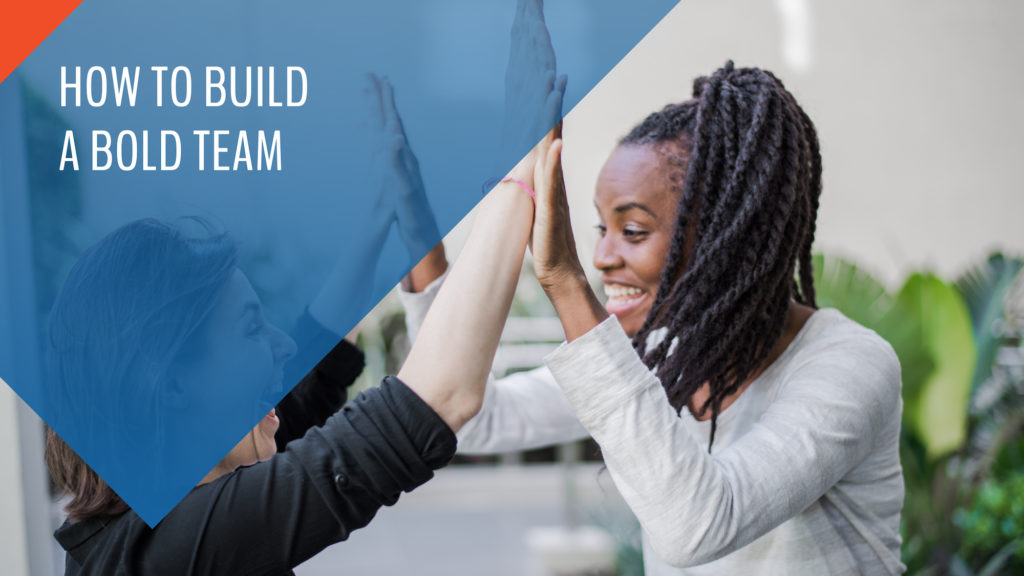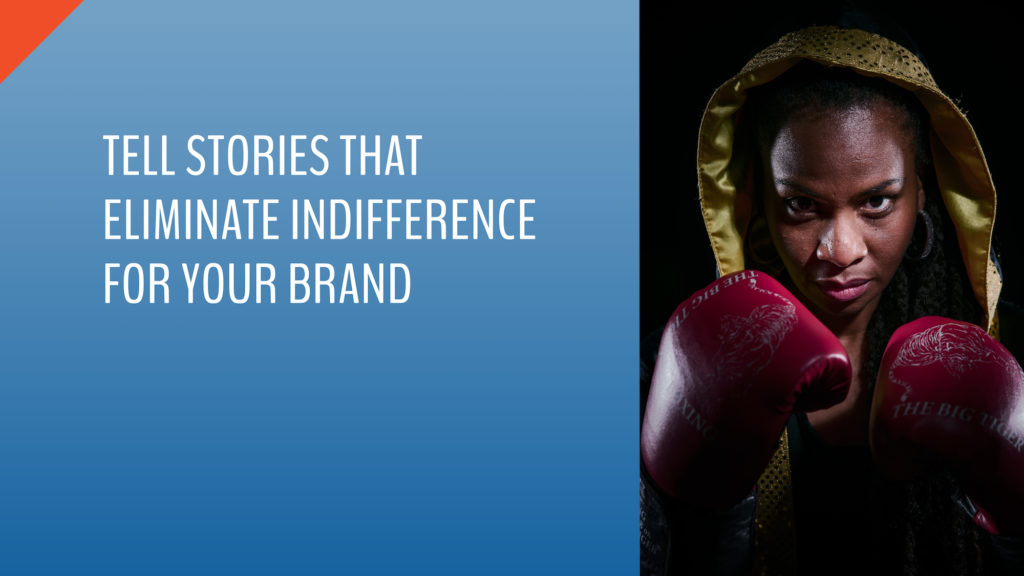Today we are talking about how to build a high-performing team. Now I am a firm believer that a high-performing team is a diverse team. But just assemblinga bunch of people with varying backgrounds, ways of thinking, and experiences doesn’t automatically produce people who work well together.
To dive into how to make sure you can build a diverse team that is able to sovle your customers’ problems like none other, I chatted with Dr. Aviva Legatt, an instructor, consultant, and Forbes columnist. She teaches a course on this topic at The University of Pennsylvania.
We can learn a ton from Aviva, in particular how to create an environment on your team that enables everyone to bring their full selves to work, which of course helps them perform better.
Key points:
- The only way to effectively teach others about diversity and inclusion
- Why everyone has some implicit bias (and practical ways to overcome it)
- The third stage of diversity and inclusion that brings optimal results
- Why sometimes diverse teams don’t perform at a high-level (and what to do about it)
- How to create a safe space within your team, where everyone feels like they belong
- The surprisingly simple way many leaders resist creating a work environment where everyone feels like they belong
- The 1 skill you need to start creating a more inclusive work environment today
Listen to the 27-minute episode here:
Read a transcript of the episode here:
3 Core elements to building a high-performing team
Sonia Thompson: Why hello Aviva. Thank you so much for joining me today. How are you?
Dr. Aviva Legatt: I’m doing great, Sonia. How are you?
Sonia: I’m doing well. All right, let’s go ahead and dive right in. I’m super excited to dig into this topic with you, ’cause you’re coming from a completely different angle than I’ve explored before. You teach a course at Penn, Diversity and Inclusion: Strategies to Confront Bias and Enhance Collaboration in 21st Century Organizations.
Aviva: That’s right.
Sonia: Tell me about that course.
Aviva: Well, first of all, all of our course names have to be a mouthful because we’re in academia. If it’s not a long title, it’s not worth taking. That’s the motto. But all kidding aside, I came up with an education background, and when you study education, you learn all about diversity and inclusion, because really, it’s critical to teaching our youth how to interact in the world by helping them to all have access to the same knowledge base, ideally, or different sets of knowledge, and to learn from one another.
I started teaching in the organizational dynamics department, and felt like this element of diversity and inclusion was really missing from the work, because as a lot of studies have shown, diversity and inclusion and belonging are all key to performance and success. I felt like we had to rectify that, and the first thing we did to rectify that was we put together a Coursera course specialization with different modules about how to build high performing teams.
One of those mini courses within the module was a course on diversity. From that course, we ended up expanding it into a in person option, or maybe shrinking into an in person option, depending on your perspective, but we had to alter it, because for the audience members that might not know, Coursera is a platform that many universities use to take courses for free online to get exposed to different knowledge base from universities. And then the course I teach that you were referring to with the very long title, that’s a course I teach in person to graduate master’s level students.
A lot of them are mid level managers, in HR, people who are emerging organizational leaders and so forth. Really the impetus was my noticing there was an absence, and then saying, “This is all about diverse teams, so I, myself, am not the only one sufficiently equipped to deliver this knowledge. I need to myself assemble a diverse team.” So first we got a number of different speakers for the Coursera course, and then for the in person course, I brought on my co-teacher, Harvey Floyd II, who’s a cross sector leader, consultant, African American man, really incredible background and an amazing force to be reckoned with.
We seem to be the ideal team. We met through my Coursera course, and I did the initial draft, and then he came on and he shaped it, and made it even better. This year we’re going into our second iteration of the course and we have amazing speakers coming, like yourself.
Sonia: Oh, thank you.
Aviva: To share wisdom with our students, but really what we’ve found is best for teaching diversity and inclusion, and I say this as someone who has taught, and also someone who’s been a student for a very long time, is people really need to get uncomfortable in order to talk about and learn about diversity. Because I think it’s very easy to read a bunch of articles and say, “Oh, of course we need diverse and inclusive teams, because that’s what the research says” but the reality is we can’t really put ourselves in a place to confront what might be hindering diversity and inclusion and belonging until we look at our own biases.
Sonia: That’s true.
Aviva: We have all of the students take the Harvard Implicit Bias Test. I don’t know if you’ve taken one of those before. Have you?
Sonia: I have not.
Aviva: Oh, I’m going to send it to you afterwards, but it’s called the IAT test, and anyone can go on and do it. It’s free and it’s public, and basically just asks you about your different preferences for things, and you have to knee jerk react or respond to the questions, really, really fast, like, “What’s your first association when you hear ‘bad’? Do you associate ice cream with bad? Do you associate presidencies with bad?” You just have to gut check, like go.
That’s a very uncomfortable exercise to find out the results from, because a lot of times, you do find out you have a bias in one or more areas. Whether it’s racial, general, religious, they have all kinds of tests like that, and it’s pretty stunning when you learn about yourself. In that class, we do share a little bit of our biases when we feel comfortable doing that, but a lot of getting to this work is so hard, because we have to admit to ourselves that maybe we’re not as perfect as we want to believe we are.
Even if we’re working towards the greater good of diversity and inclusion and belonging, we know these things are good, but what within ourselves is preventing that from happening, and how do we reflect on that and move forward from that to create better collaborations and better results?
Practical definitions for diversity, inclusion, and belonging
Sonia: For sure. Now you said so many wonderful things. I’m going to put a link to that assessment in the show notes, so people can access it and take it, ’cause I want to take it for sure. Now, before I ask you more about the course and the problem that you solve, I want to make sure that everybody’s grounded on these terms. Because we hear diversity and inclusion a lot, and belonging is something that’s starting to come up even more so, and I know, and I say this all the time, business is about belonging.
Can you just give a quick definition, maybe the academic definition, of what is diversity, what is inclusion, what is belonging, and why do we need all three?
Aviva: Oh, that’s such a good question, and I’d be curious to hear your thoughts, maybe you have a different definition than I do. But to me, it’s like stages of diversity, inclusion, and belonging, and belonging is like the best phase to be in, right?
Sonia: Mm-hmm (affirmative).
Aviva: Because diversity just means that you’re bringing in different perspectives, so whether it’s backgrounds based on geography, race, gender, you can bring in different people of different backgrounds, but if you’re not leveraging them, then it may not lead to any good results at all. In fact, there have been studies that show that sometimes homogenous teams perform better than diverse teams when the diversity isn’t leveraged. Because there’s not psychological safety, so inclusion is really the next level of saying we all have a place in this company, in this organization, and we feel included.
But I think belonging is the deeper version of inclusion, where it’s not just that we feel like we have a voice, but we really feel like we’re going to bring our whole selves to work, all of our perspectives, our work is aligned with our identity, with our values, and we’re leveraging those every day. That’s the deep level of inclusion, and I think inclusion on paper could just be like, “Oh, we have some affinity groups. You can join those if you feel so inclined,” but belonging is a true genuine environment for speaking up, for bringing our whole selves to work.
Sonia: Yeah. I like those definitions, and I really like the one that you have about belonging in particular. Yeah, I see diversity as like the, like you said, just the basic differences that we had, and putting them all together and assembling them. Inclusion is whenever you’re actually not trying to build a melting pot, right? You want to be able to leverage the differences and the strengths that each person brings to the table in a way to where they feel like their voice can be heard, and it’s valued, and that they are able to help make the end product better, and that belonging piece is like, “Yeah, these are my people. They know me, they get me, they want me to be here, and we are all part of this crew, or family.”
I feel like if you don’t have a team where everyone feels like they belong, you’re not going to be able to create an environment for your customers where everyone feels like they belong, and your customers, of course, if you have a diversity customer group, increasingly, especially as you’re thinking about the way things are changing in the US, if you’re serving customers from around the world. That’s why I feel like that’s especially important.
Aviva: Right. I think you and I share that, because I work with customers who come from Asia, come from Europe, come from US, all different parts of US. A lot of first generation Americans, a lot of longtime American families, so everyone is coming at this world with their own perspective and so helping folks understand themselves and the value that they bring to the table, and we haven’t talked about this yet, but one of my businesses is college application coaching. So, a lot of what I do with that is very similar to my diversity work, in that I help people really identify what are their strengths and values, and how would those best match with the universities that they’re targeting?
Sonia: Got it.
Aviva: I mean, what universities would be relevant and helpful to target? What universities would enable them to achieve that sense of belonging and which ones would just be good names to have?
Sonia: Got it, got it.
Aviva: A lot of that is my helping other people to understand what diversity, if you will, they’re bringing to the table, because we are all different, but on paper, we can really look the same if we don’t really understand ourselves and the value that we have.
How to create a safe space within your team that allows everyone to bring their best selves to work
Sonia: For sure. Now, you mentioned that the students who take this course that you lead at Penn, a lot of them are managers or working on their master’s degree. What is the specific problem that you solve for them? Are they taking this course as like, “Okay, this is part of the curriculum, I’ve got to check the box,” or is it more of, “We know we need this to become better managers and better leaders within our organization?”
Aviva: That’s so interesting. I’m really glad you asked that, and I think for every person it’s probably different. I remember some of the people saying, who came to our course, “I want to get into this work and that’s why I’m taking this course” and other people said, “I’ve been involved in this work” or, “I’m a people of color, so I’m always called on to be part of this work, and I’m feeling burnt out, and I don’t like that this problem is just a problem and I can’t do anything to solve it, so I’m looking for inspiration and a community.”
It really has depended on the participant, what they’re looking for, but our class isn’t required, so if you are taking it, you have a specific interest in diversity. Actually, I was very happily surprised that it wasn’t just organizational dynamics students who were taking our course last year. It was students from the school of social work, from the school of education, from Wharton, who were interested in this topic.
I know that it’s compelling and it affects all of us, and it affects our ability to do things well, and to feel that sense of belonging. I think that’s what we all want to feel in whatever we do. We want to feel like we’re in the right place at the right time. We want to feel like our skills are being used well. No matter our background, that’s what we hope that everyone could achieve wherever they are.
Sonia: For sure. Now, you mentioned that a big part of diversity training, and actually creating a transformation in the people who are going through this, so that they actually can create that environment where people feel like they belong, is getting uncomfortable. That requires tearing down probably some unconscious biases that exist. Can you just talk a little bit about unconscious bias, what that is, how it plays out, and how you even start to overcome it?
Aviva: Yeah. That’s such a good question. I think the first step is awareness of any problem. You have to know there’s a problem in order to fix it. That’s where I’d say the first step is the Implicit Bias Test. I feel like any team that’s very serious about doing this work should have their teams take the test. Now, you shouldn’t make it mandatory for people to share the results, because they are very, very uncomfortable sometimes. You’re like, “Wait, what? That’s what I said? That’s the way I feel?” Then you start feeling like, “Well, what would that really mean in reality?”
I know that for me, I’ll share one of mine, and it’s uncomfortable for me to share, but I’m going to share. I’m Jewish, so I realized through taking this test that I’m very biased towards people of my own group, and I think that’s a very evolutionary, because we had to stick together to avoid conflict and problems through all these places. I’m like, “No, on paper, I wanted to say that I have no preference for any one group,” but the reality was like, “Okay, yes, I got that result.” And it makes sense to me in context, so for me on a practical level, what that means, is that I just need to make sure I’m taking into account other perspectives that may not jive with necessarily my cultural context, and perspective that I have, some different values like values around education and values around hard work, and maybe other people have different values or different perspective on those values.
It doesn’t mean that they shouldn’t be unheard or understood, but maybe I just have to listen a little bit more and be curious, and interested in what they’re saying. I’d say number one is know what you have to work on, and then number two, be curious, and listen to other people. Because you can learn so much and really shape your own perspective, and expand your perspective by listening to other people. Some of the best companies incorporate active solicitation of input in making decisions. Like, Google always has a lot of great innovations going on, but they have their own system for people to submit their input on things, and then their leaders take that into account and implement it.
I would say number one, reflection. Number two would be listening and collecting input, and then number three would be actually listening and acting on the input that would be relevant to the situation, whatever that is.
Sonia: Right. Yeah, I think like you said, the important part of addressing that implicit bias is first acknowledging that it’s possible that you can even have it. What that means, ’cause I think like you said, most people probably think, “No. I don’t have any of these types of biases,” but yeah, I think like you said, we’d all be surprised. Then, once we have that information, we can move forward to try and make sure that we do better.
Aviva: Exactly. But I think the big challenge to actually implementing this is that a lot of workplaces are not psychologically safe spaces, and that’s where the problems come in to even get to this place where we feel this inclusion and then even deeper, this sense of belonging. A lot of workplaces aren’t hospitable to people bringing their whole selves at work. A lot of workplaces are going to just work their workers really hard, according to their gender, and they don’t really care about what you’re bringing to the table on a deeper level.
That’s the challenge I think to doing good work in this space is how do you overcome that psychological safety barrier, and a lot of that I think starts at the top. I know one of your questions to me is like, “Has any organization gotten it right?” I think that some organizations are working towards that, but I think it’s a continuous learning process. You’re never going to be done with this work because there’s always going to be new people and new problems to deal with, and they’re going to bring up some of these biases. The biases that we have aren’t going to go away, but we have to reflect on them and address them in a situationally appropriate manner.
Sonia: What can leaders do? They might not necessarily be able to impact their entire organization on one fell swoop, but what they can do within their sphere of influence on their team to create that sense of belonging to try to expose those biases where necessary, so the team can have that psychological safe space? How do leaders create that psychological safe space, so that their team can function at a higher level?
Aviva: Well, one process that we have used with my work at Wharton, where I do some high performance teams facilitation, is we act as observers of the team. We will ask questions that reflect dynamics that we saw during the team, and ask them to comment on that, did they see that? That can help to alert people to blind spots, but even if you don’t have a facilitator on your team, I think … Well, what our goal at Wharton has been is to help people become their own observers. What people need to do is to become their own observers, and realize that having a good team, part of the job is seeing how people interact and what the meaning of that is.
You might not have the right meaning when you first see it, but being curious, listening, trying to understand what’s going on, that can help to create a safe space. I think just on a practical level, just asking people, “How are you doing? How are you feeling?” And actually caring about the answer is just a small common sense way I think to create that psychological safety.
Sonia: Got it. Now, what strategies do you recommend leaders employ to actually extract the value that having a diverse team brings to make it a high performing diverse team? Like you said, you want to be able to have your team perform better, and diversity will do that if you leverage it. How should people go about making sure that they do that?
Aviva: I think it really depends on what kind of diversity exists within the organization. Some organizations, it depends on what country you’re in, right, too? You might have a completely racially homogenous organization, but it might be very diverse in terms of cognitive diversity. You might have some introverts and some extroverts, or you might have some tech folks or some HR folks, or something like that.
What I would say, though, is that leaders should recognize that everyone has their own style of giving input and soliciting input. One practice that Twitter does, that other organizations may find helpful is that they don’t have a formal presentation meeting, so there’s not going to be a meeting where someone’s in there, clicking the slidedeck, while everybody sits and listens. It’s an active space for input, and there are multiple ways to give input.
You can give input in writing, you can give input out loud, but sending people the presentation, the agendas in advance, gives people a chance to reflect on what they actually want to bring to the meeting instead of just calling everyone to a space and talking at them.
Sonia: Got it.
Aviva: I think the key to leveraging diversity is recognizing people’s humanity and setting up the conditions for people to fail, people to come to work with their personality, with their values, and then obviously whatever the cultural context is, that’s going to inform how that’s rolled out.
How to overcome organizational resistance to diversity, inclusion, and belong efforts
Sonia: Got it. What type of resistance have you encountered as it relates to diversity and inclusion and belonging for organizations? Because as much as we would like to believe that everybody’s onboard, I know they’re not. What’s the type of resistance that you get, and what do you get when you encounter it?
Aviva: Well, I think that unless you’re talking about it, you’re inadvertently resistant to it, right? But it’s hard to address because it’s kind of a quiet resistance. Like, “We’re a Fortune 500 company or we’re a Fortune 50 company, so we’re named the best workplace by XYZ,” whatever, “And so we don’t have those problems,” right? I think it’s how do you get people out of that stage of denial. I think that’s such a great question, and I wish I had the answer. I’m sure if somebody did, it would happen, right?
I think the key that some great organizations have measured, a lot of organizations have taken, is having diversity as part of the C-Suite, that there’s like a Chief Diversity Officer, and it’s reporting directly up to the CEO, as opposed to an HR function or making it one person’s charge to do this. It really has to be a top-down and a ground-up kind of effort.
Sonia: For sure, for sure. All right. Well, what else have you been working on? You’ve done so much great work. What can we expect to see from you in the future? Do you have any other cool things that people should know about if they want to check you out further?
Aviva: Oh thanks. Yes, well we haven’t talked about … I have a column in Forbes, so as I mentioned, I have a business helping students apply to college, and I write about, related to that, I write about issues affecting millennials in higher education. If people are interested in that, they can check out my Forbes column. And I’m writing a book on, it’s kind of like a memoir of many people on their college acceptance, and their college experience, and how that impacted them, and what leadership lessons they gained, that were rooted in that college process.
Because I think this, as in the college application process, the college experience, is such a transformative and critical time for so many people. Whether it’s when they went through the experience, or a reflection they have afterwards, it’s really a critical piece of a lot of people’s life, and I know it was a critical piece of my life. So, I think I’m just really excited to explore this issue, because this was such a transformative experience for me. I don’t want to say who they are yet, because the interviews aren’t yet done, but we’re going to have some amazing interviewees lined up.
I can share those with you offline just to tell you, and I have a major publisher who would like to work with me. So, look out for that book. It should be out next year, and right now, just in the process of interviewing, so if you know people who have gone to top colleges and who are doing great things in the world and making a public impact, I’d love to hear from you.
Sonia: For sure, and I’ll have all of your information in the show notes so people can find you easily. Excited for your book to come out and-
Aviva: Thank you.
Sonia: … definitely want to read more of your work over on Forbes. This has been a lot of fun. Any parting words on wisdom for business leaders who want to build high performing diverse teams, that are able to deliver remarkable experiences for their customers?
Aviva: Thank you. I think the number one thing I could say is the skills of listening cannot be underestimated, and if you just pause and listen to employees, you’ll get the answer. I don’t think it has to be on any one person to drive this, but it has to be a collective effort in order to succeed. Listening is an easy thing to do and it’s also a difficult thing to do. That would be my number one piece of advice.
Sonia: Got it. It’s such an important one, as well. You’ve got two ears, right?
Aviva: Yes, exactly.
Sonia: Aviva, this has been a lot of fun. Thank you so much for sharing your experiences and your wisdom with us. It’s been very insightful.
Aviva: Yes, great. Thank you so much, Sonia. It’s been a lot of fun.
Show notes:
- Harvard IAT Implicit Bias Test
- Coursera Course – Culture-Driven Team Building Specialization
- Aviva’s column on Forbes
- Vived Consulting
- Aviva on LinkedIn
- Aviva on Facebook
- Aviva on Twitter
Free Mini-Course: The Customer Magnet Playbook
Free Mini-Course: The Customer Magnet Playbook
7 Essential elements your business needs to consistently win more customers
- Framework based upon in the trenches experiences from 150+ business and thought leaders
- Science-based explanations to support why the elements of the blueprint work
- Action items to help you get some quick wins
